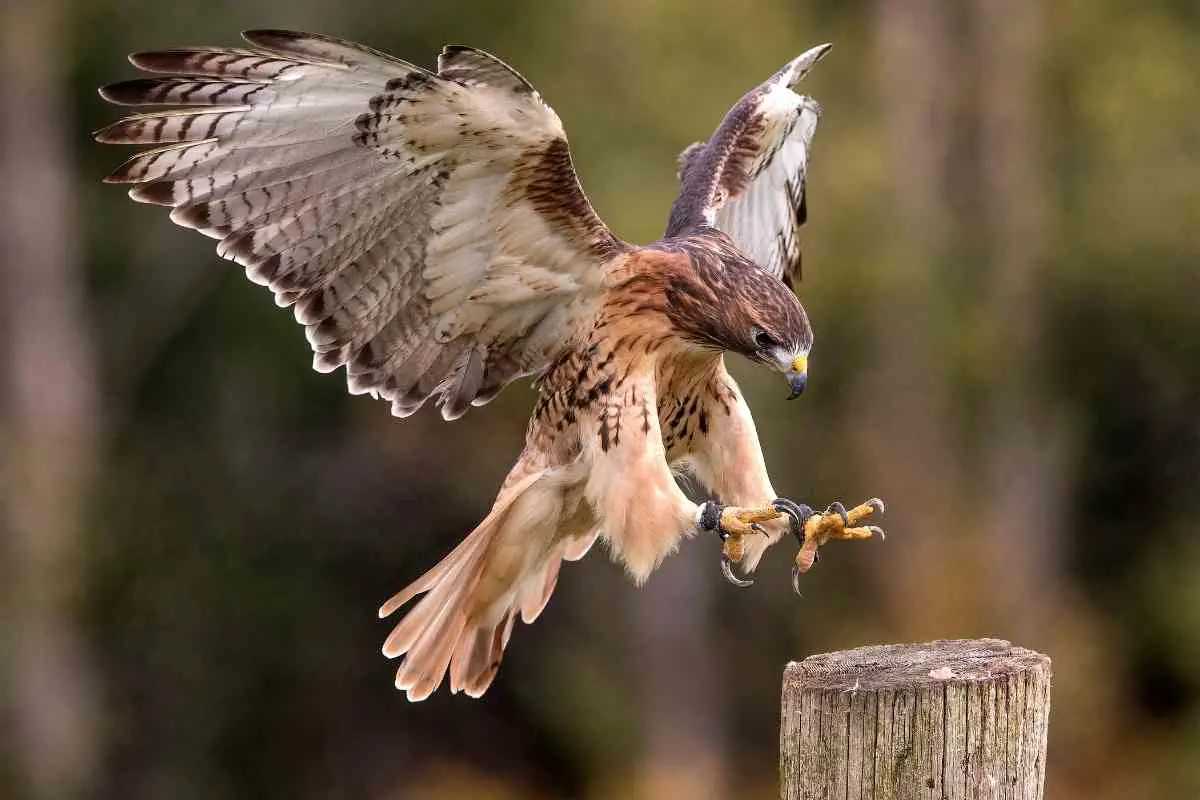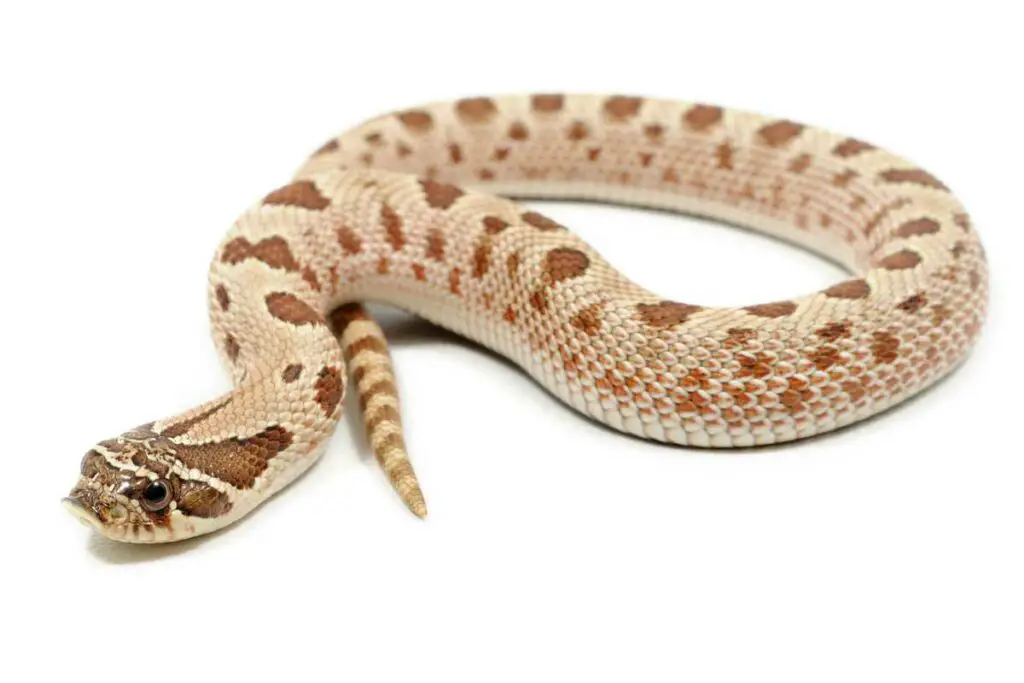Out of all the birds of prey, the magnificence of the hawk is probably only surpassed by the bald eagle.
Varying types of these diurnal birds are an excellent fit for the US, thanks to different climate zones suitable for diverse wildlife.
The accipitrine hawks are sometimes called true hawks, and the Buteonine hawks are alternatively known as buzzards—however, the Buteo group members are known as hawks in the US.
In this article, we will look at 15 types of hawks found living in the US, whether during breeding season or all year round.
Table of Contents
1. Red-Tailed Hawk
On the most common raptor sighting in North America, the red-tailed hawk is understandably one of, if not the most famous hawks in America.
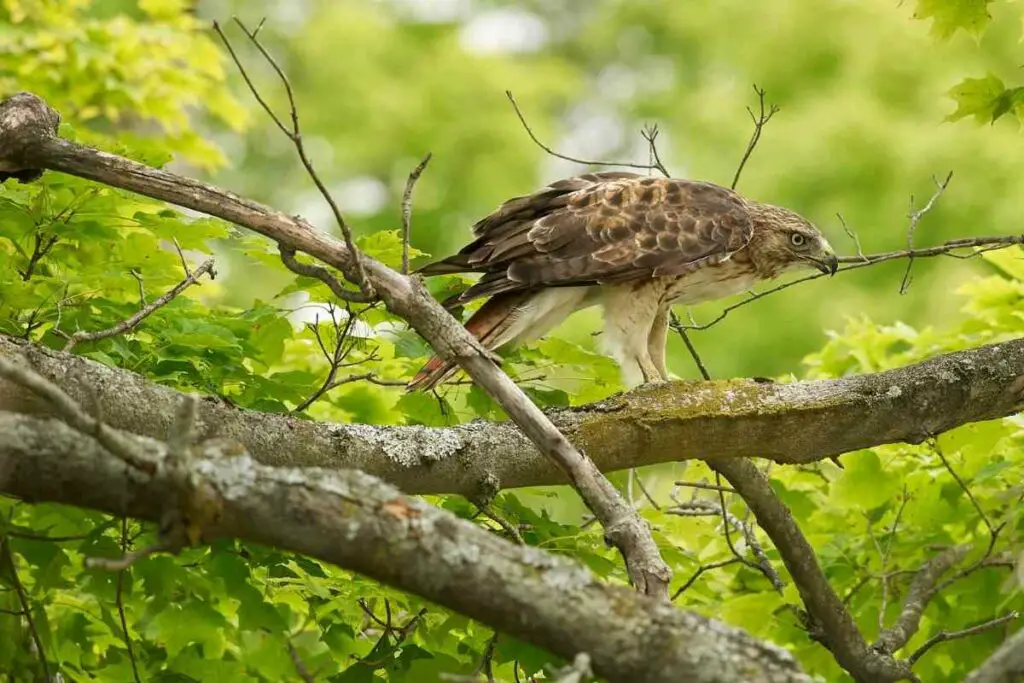
With its contrasting white chest and red-colored tail, there is no chance of missing this bird of prey.
Red-tailed hawks love open lands and will make a home in varying places if they have vast areas for flying and high perches.
These hawks are seen frequently in the US, from the countryside to roadside poles to plains. You can often spot them floating while riding thermal updrafts.
This raptor uses its talons to grab and fly away with its prey.
They feed on:
- bats
- snakes
- squirrels
- small rodents
- rabbits
- frogs
- insects
- and birds
Cliff ledges and tall trees, and (with loss of natural habitats) tall urban buildings are some of its favorite places to build a nest in the breeding season in Spring.
You can find these hawks in the lower 48 states of the US all year round, whereas, when breeding, they may also be spotted in Alaska.
Interesting Fact: The red-tailed hawk’s call is frequently used in movies to replace a bald eagle’s much more muted call.
2. Red-Shouldered Hawk
As the name suggests, the red-shouldered hawk’s auburn shoulders are on full display when perched.
Their barred henna-colored chest adds to their majesty, as the raptor soars over woods, preferably with an open canopy, to quickly hunt down small mammals as well as amphibians when needed.
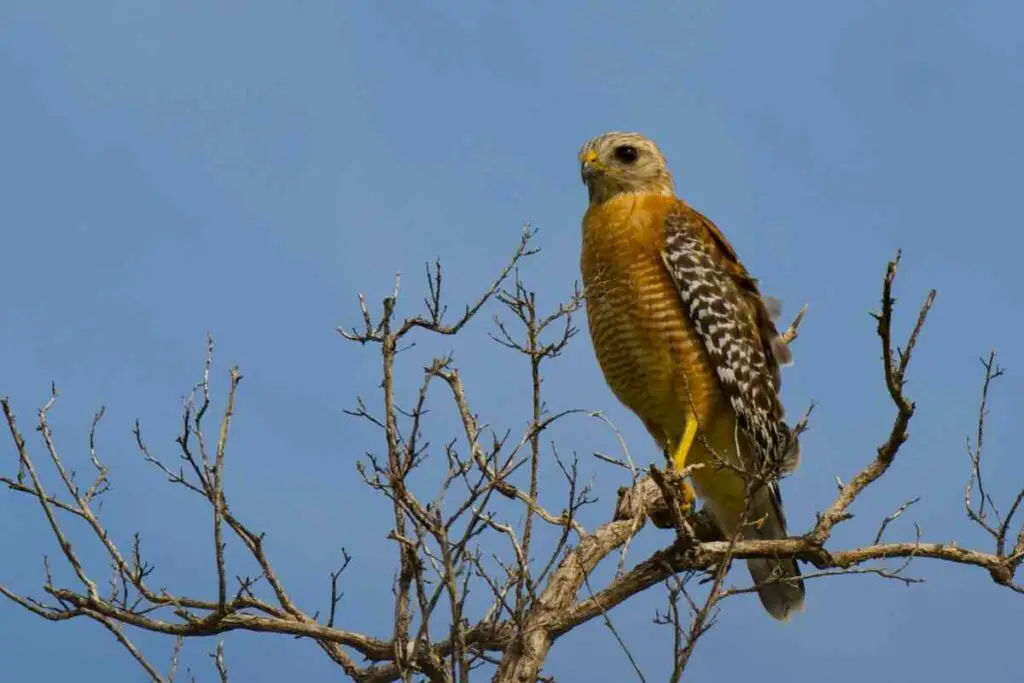
It pounces its prey by directly dropping from above in a unique style to other hawks.
The most likely place to spot a red-shouldered hawk is the woodlands, but these usual forest dwellers can be seen in suburban areas if the houses expand into woodlands.
All year-round, you can find these raptors in the American south and the Californian coastal regions.
In the winters, eastern California and southwestern Oregon are your best bet to spot this rufous hawk.
3. White-tailed Hawk
These beautiful big birds rival the red-tailed hawk in size.
When identifying a white-tailed hawk, look for the brilliant white tail with a black band at the rear end.

These hawks occupy the prairies, pastures, and grasslands in southern Texas.
Their primary source of food is small mammals – some songbirds use this to their advantage to gain protection from their predators who dare not make an appearance in front of the majestic raptors.
They have a distinctive high-pitched call, then amends with several “ke” sounds.
Like Most Hawks: They keep re-using the same nest sites, making the nest grow very big with up to 1m in length across.
4. Ferruginous Hawk
The Ferruginous hawk is one of the largest hawks (and the largest buteos) found in the US.
It has feathers down to its feet, a distinctive feature that only one other US hawk, the rough-legged hawk, has.
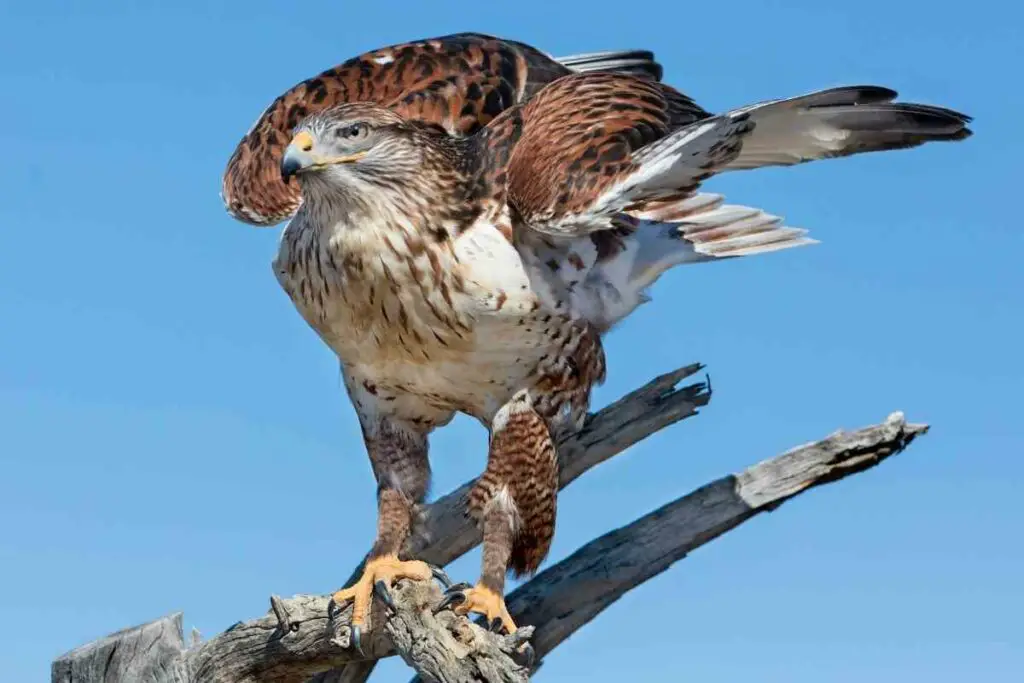
The ferruginous hawk has a light and a dark morph. The light morph is more familiar with reddish-brown back and legs and pale chest, hence the name.
The dark morph has chocolate-colored feathers compared to the rusk color of the light morph, but they are not as common.
These giant raptors live in deserts and open plains, feasting on small mammals and prairie dogs.
5. Cooper’s Hawk
Cooper’s hawk is an accipiter of medium size, with classic broad rounded wings and a long tail.
You can spot them in most of the 48 lower states all year-round. Their biggest tells are the white and brown speckled chest and amber eyes.
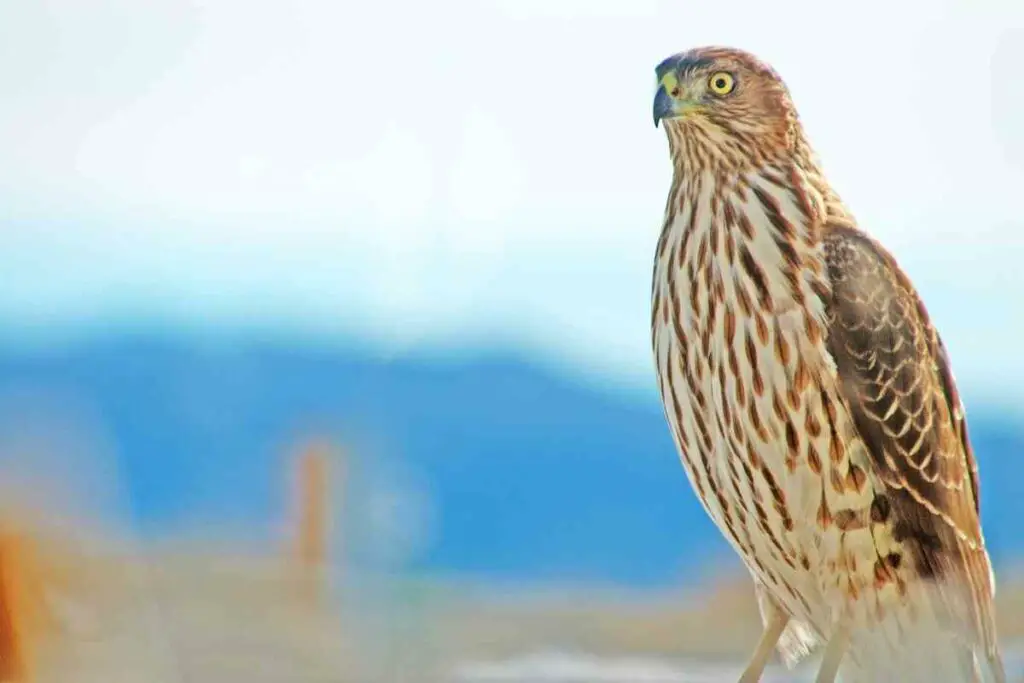
The Cooper hawk’s flying agility is often talked about and is one of the primary reasons they can feed on songbirds; you can catch their glimpse at the bird feeders frequently.
The Cooper population is rapidly increasing in urban locations.
6. Sharp-Shinned Hawk
The sharp-shinned hawk’s small size is compensated for by its excellent athleticism.
Sharp-shinned females tend to be bigger than males.
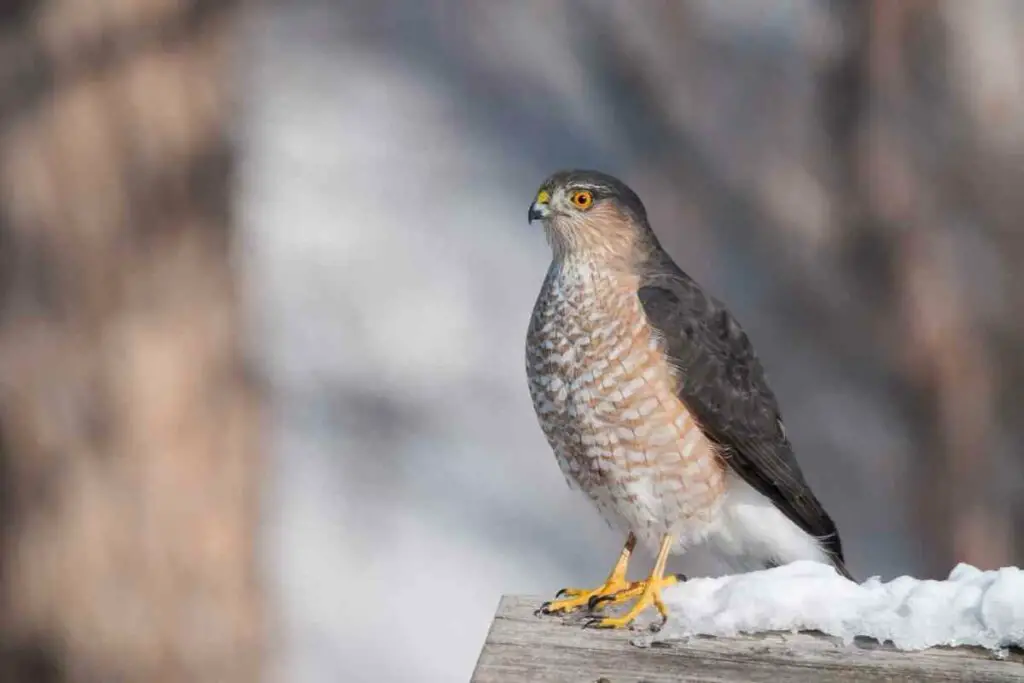
Even though they look a lot like Copper hawks, their speckled orange chest that fades into their belly is a good identification marker, along with their much smaller size.
You will find them in the Northern half of the US during the breeding season.
However, they return to southern states to spend winter – even though some remain year-round hawks that do not migrate.
They enjoy a diet of songbirds, dashing into prey on them from bird feeders.
7. Short-Tailed Hawk
You will most likely find these tropical raptors in Florida.
However, they have now expanded to the Mexico-Arizona border.
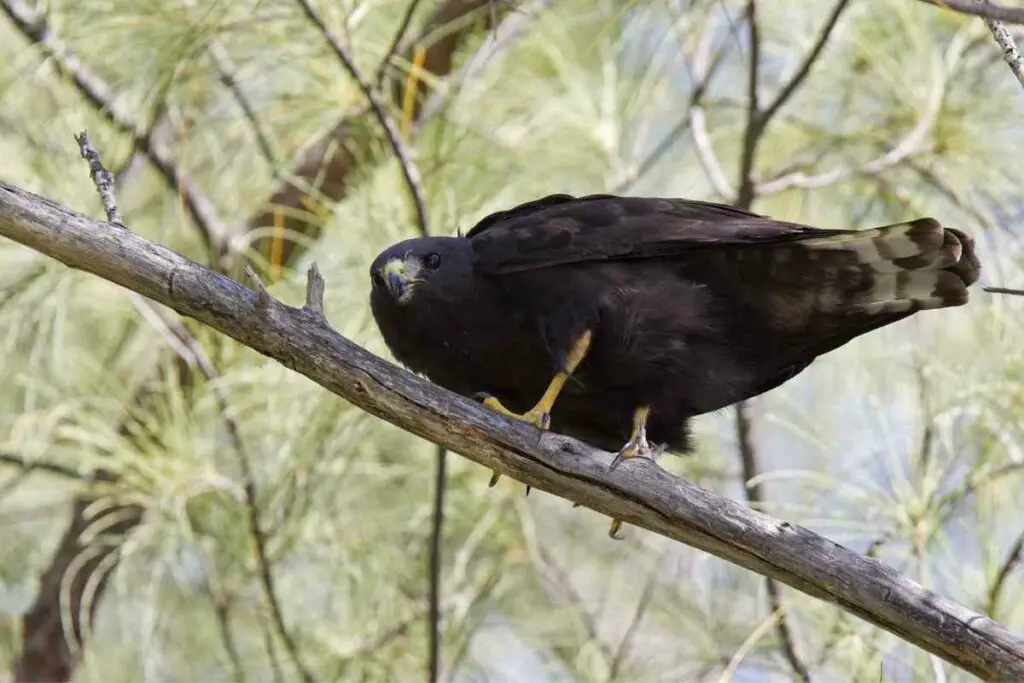
With a smaller population and the habit of not perching in the open, these hawks are hard to spot.
Unlike other birds from the Buteo groups, these hawks eat smaller birds, but they are usually not very successful while hunting.
It has an unusual way of hunting when it seemingly stops in the air before going straight down to attack its prey.
8. Zone-Tailed Hawk
With shiny grey-black fur, the zone-tailed hawk is a sight to behold.
This regal bird makes its home in the Southern Western US during the breeding season.
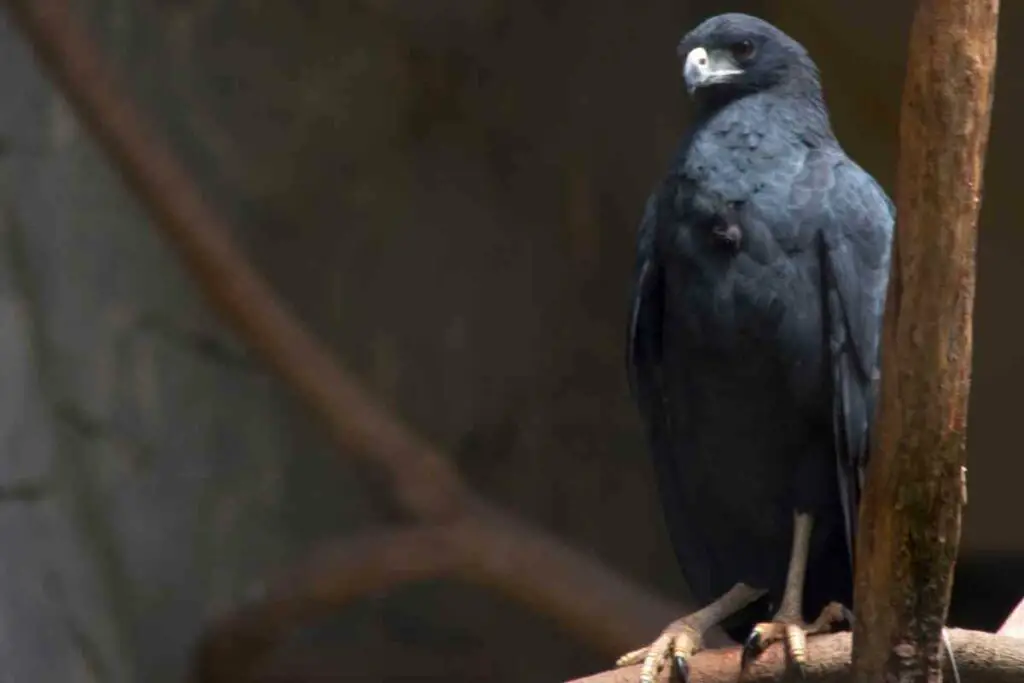
Their visual similarity to the Turkey vulture helps them quickly snatch their unassuming prey.
Shrublands and wood canyons are their preferred habitats.
During Mating: These hawks dive and loop in the air. Whereas for territorial defense, it’s common for the zone-tailed hawks to scream, make rounds, and descend to the ground.
9. Northern Goshawk
Present year-round in some parts of western Us and Alaska, the Northern Goshawk is hard to spot.
However, you cannot miss this raptor with blood-colored eyes and a dark feathered head. They nest in giant coniferous trees and hunt in woodlands.
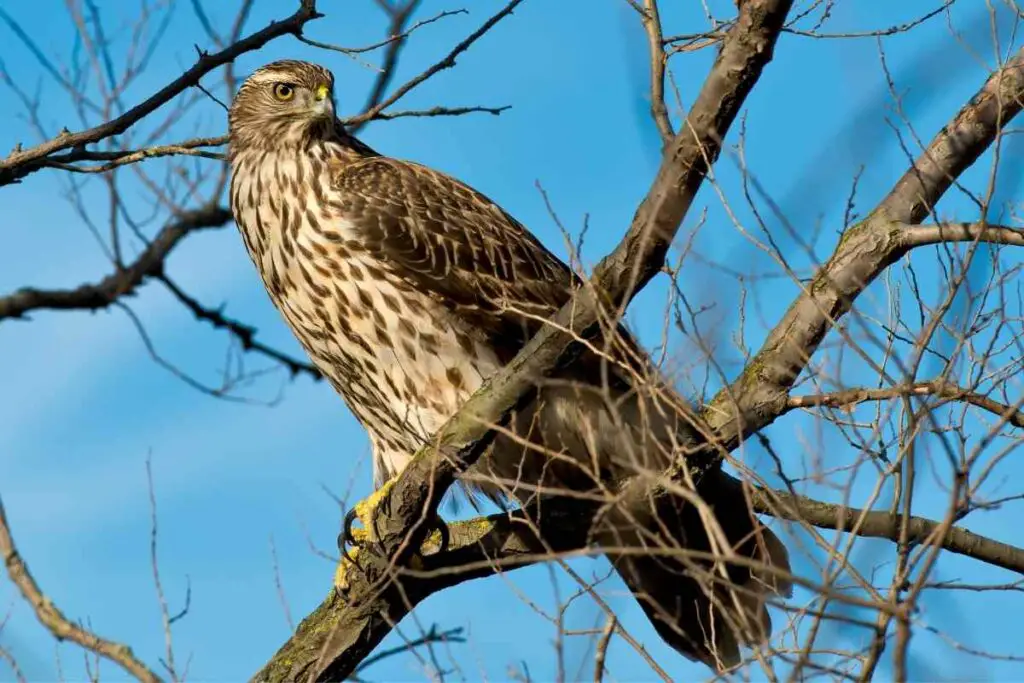
The canopy cover gives them the element of surprise when hunting their prey.
Extremely territorial by nature, the Northern goshawk will attack anyone nearby their nest that they take as a threat.
Keeping their size in mind, this territorial behavior can prove dangerous to various intruders, including humans.
10. Swainson’s Hawk
Swainson’s hawk migrates to the US west and eastern Alaska in the breeding season, all the way from Argentina, making it one of the longest migrations by any raptors found in the US.
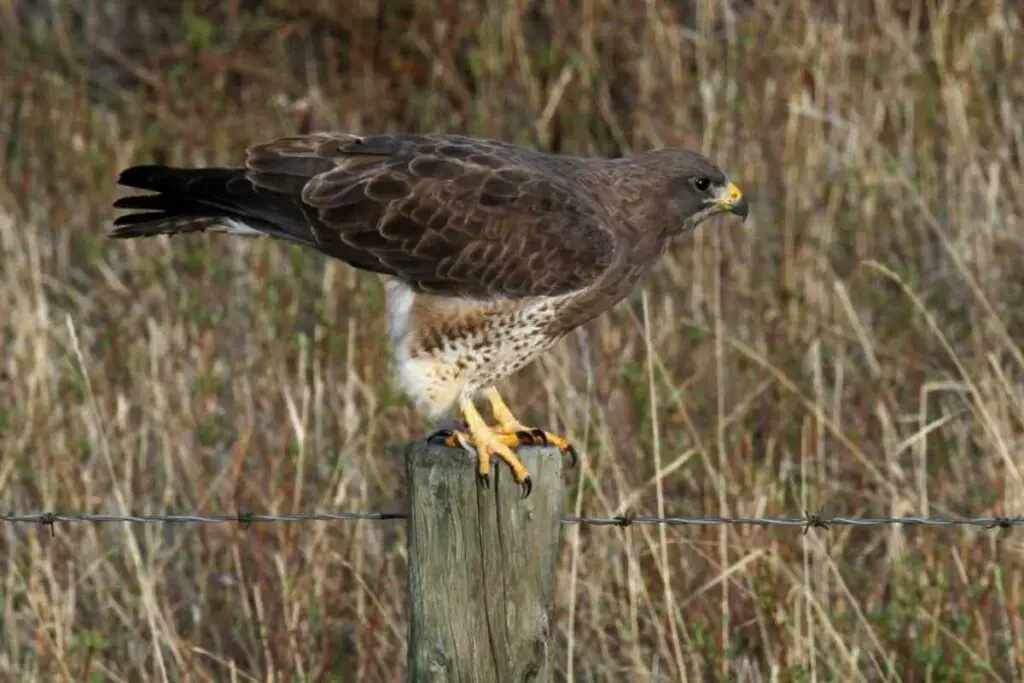
They love to hunt reptiles, rabbits, insects, and rodents in the open country during the breeding season.
During fall, you can catch the great migration of various raptors, including the Swainson’s hawk, turkey vultures, and broad-winged hawks.
11. Harris’s Hawk
Harris’s hawks, with their long legs, look like part falcons.
They can be spotted in the southwest part of the US. Contrary to many other raptor types, Harris’s hawks hunt in groups, where the feeding order is based on the group hierarchy.
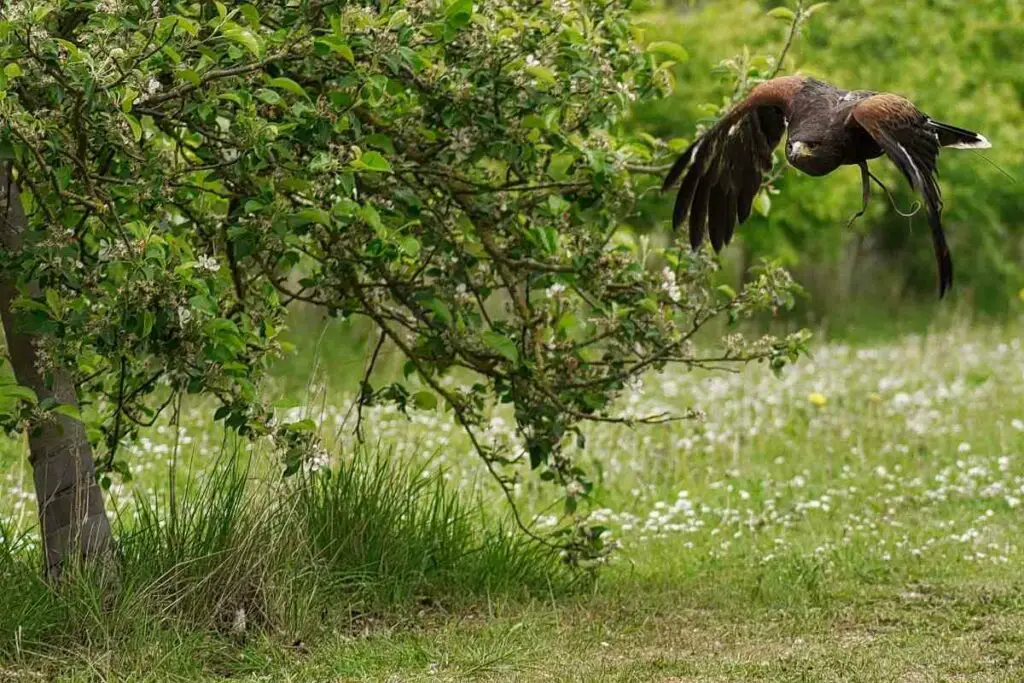
Though unusual, the non-migratory birds living in groups have a better survival chance than those living alone,
While their habitat of choice is desert lowlands, their population has increased in urban areas due to consistent food availability.
12. Rough Legged Hawk
Just like the ferruginous hawk, the rough-legged hawk has its legs covered with feathers down to its claws.
In summer, the Arctic tundra is a breeding ground for this.

Its feathered legs and dense body cover help the hawk sustain the arctic cold before migrating south for winter.
The Rough-legged hawk likes to set eyes on its prey from a perch and then dive down to catch it – their unique hovering hunting style is hard to miss.
13. Common Black Hawk
The common black hawk is not so common in the US, present in New Mexico, Texas, Arizona, and neighboring areas for the breeding season.

Its black body with white bands on the tail makes for a regal figure. You can usually find these black raptors in shallow waters for their love of crab legs.
Moreover: The common black hawk also feeds on young birds, frogs, snakes, and other small aquatic animals.
14. Broad-Winged Hawk
This stocky broad-winged hawk is not easy to spot hidden away deep in the woods.
With their white mottled chest, it is easy for broad-winged hawks to camouflage in the forest.
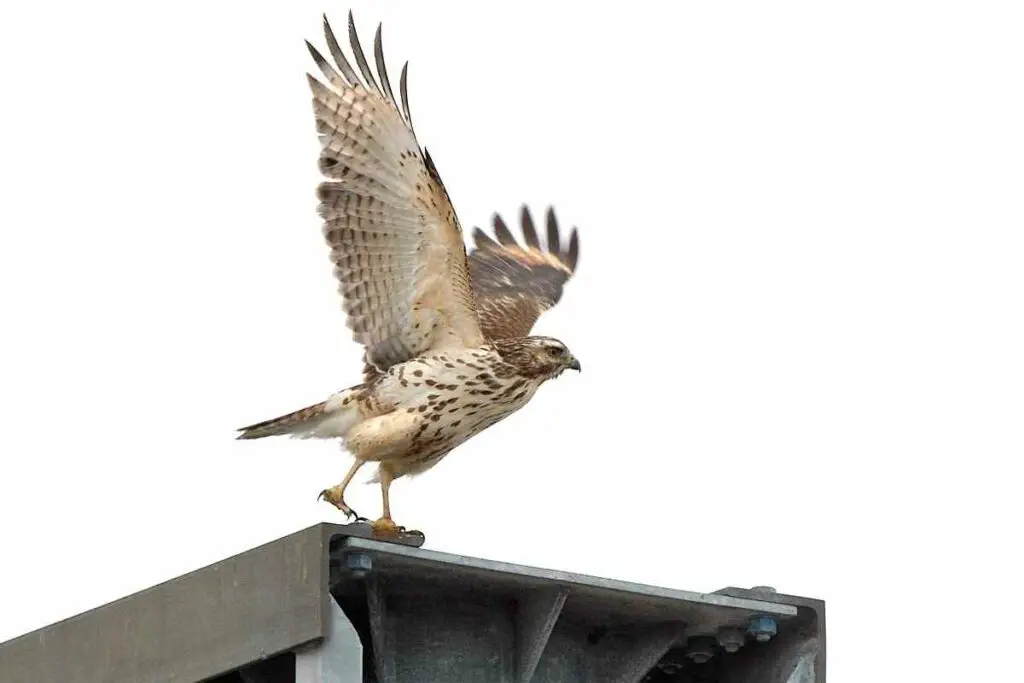
These raptors perform extensive migrations to Central America in winter. Their summers are spent in the eastern half of the US.
From snakes to sam animals, the broad-winged has a variety of prey that it observes patiently before finally pouncing to kill.
15. Gray Hawk
Like its size, the gray hawk also has a smaller population in the US.
A neotropical bird, the gray hawk, can venture into southern parts of Arizona, along with Texas and New Mexico.
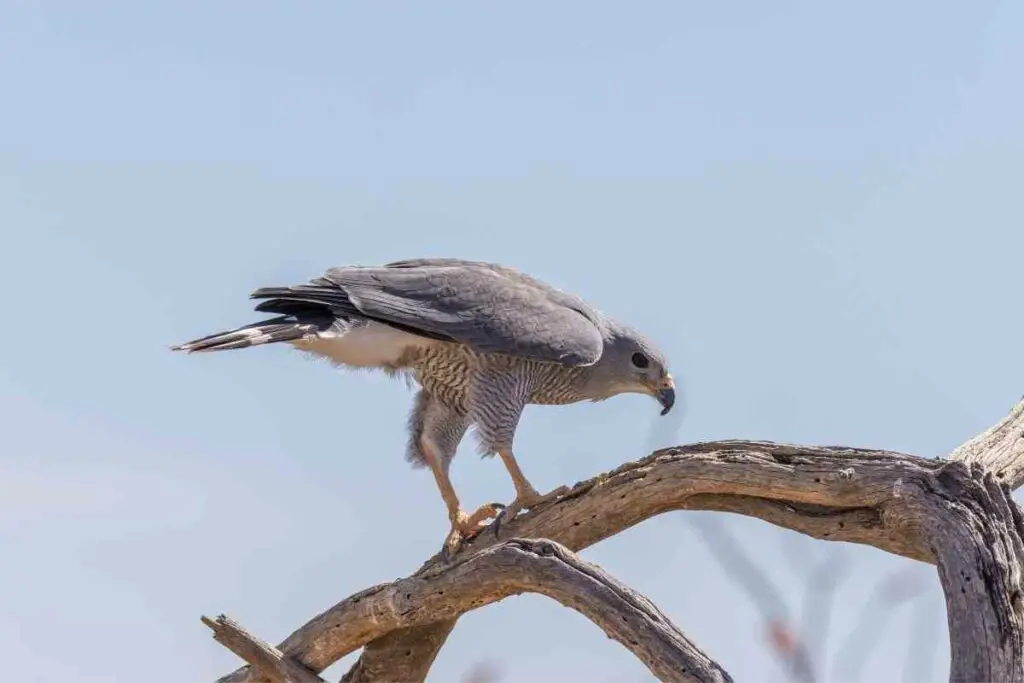
This hawk is famous for putting on a spectacular show of sky dances during the breeding season.
Even though it is part of the Butei groups, it soars effortlessly over thermals like accipiters.
They like to eat lizards and small animals, which they can find plenty in the US states they enter.
Final Thoughts
A wide variety of these great raptors is found throughout the US.
Their strength, speed, eyesight, and hunting strategy are what make hawks one of the best flying predators in the world.
If you are lucky, you can spot one or more kinds of these birds, mid-flight or perching atop a tree branch, in different states across America.

